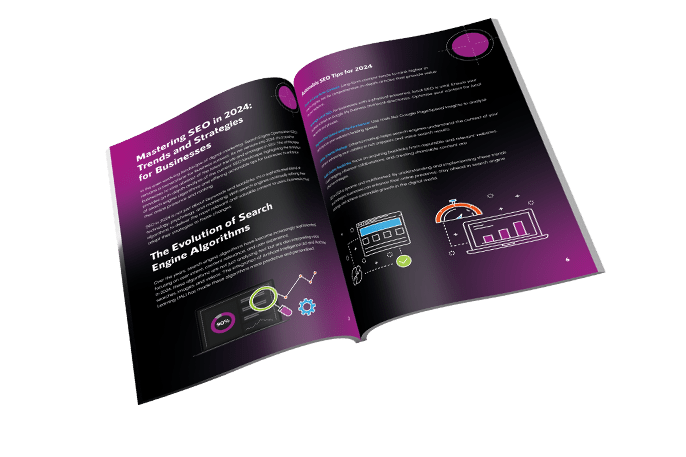News
The Shift to First-Party Data: Navigating Privacy and Personalisation
The digital landscape is undergoing a transformative shift as businesses increasingly turn to first-party data collection amidst the phasing out of third-party cookies. This change is driven by growing concerns over privacy and the demand for more personalised consumer experiences.
As businesses navigate this new terrain, understanding the nuances of first-party data, its benefits, and the strategies for effectively leveraging it becomes paramount.
This article delves into the transition from third-party to first-party data, exploring how businesses can enhance both personalisation and privacy in this evolving ecosystem.
The Decline of Third-Party Cookies
Third-party cookies have long been the cornerstone of digital advertising, enabling businesses to track users across multiple sites and gather data to inform targeted advertising. However, increasing scrutiny over privacy issues has led to significant regulatory changes. Notably, the General Data Protection Regulation (GDPR) in Europe and the California Consumer Privacy Act (CCPA) in the United States have imposed stricter guidelines on data collection and usage. These regulations, coupled with rising consumer awareness and concern over privacy, have accelerated the decline of third-party cookies.
In response, major web browsers such as Google Chrome, Safari, and Firefox have announced plans to phase out third-party cookies. Google Chrome, which holds a substantial share of the browser market, is set to eliminate support for third-party cookies by 2024. This impending change marks a pivotal moment for businesses reliant on third-party data for their marketing strategies.
The Rise of First-Party Data
As third-party cookies become obsolete, first-party data emerges as a vital alternative. First-party data refers to information collected directly from a business’s own sources, such as websites, apps, and customer interactions. This data is inherently more reliable and accurate, as it is gathered with the consent of users who directly engage with the brand. Examples of first-party data include purchase history, website behaviour, email interactions, and customer feedback.
The advantages of first-party data are manifold. Firstly, it aligns with the growing emphasis on privacy, as it is collected transparently with user consent. Secondly, it provides a deeper understanding of customers, enabling businesses to create more personalised and relevant experiences. In a survey by Deloitte, 62% of consumers said they are willing to share their data in exchange for a more personalised shopping experience, highlighting the potential of first-party data to meet consumer expectations.
Enhancing Personalisation through First-Party Data
Personalisation has become a key differentiator in the digital age. Consumers increasingly expect brands to understand their preferences and deliver tailored experiences. First-party data empowers businesses to achieve this level of personalisation. By analysing data collected from various touchpoints, businesses can gain insights into customer behaviour, preferences, and needs.
- Customer Segmentation: One of the most effective ways to leverage first-party data is through customer segmentation. By categorising customers based on their behaviours, preferences, and demographics, businesses can create targeted marketing campaigns that resonate with specific groups. For instance, an online retailer can segment its audience into categories such as frequent buyers, occasional shoppers, and first-time visitors, tailoring its messaging and offers accordingly.
- Behavioural Targeting: First-party data allows businesses to understand how customers interact with their digital properties. By analysing browsing patterns, click-through rates, and purchase history, businesses can identify trends and preferences. This information can be used to deliver personalised content and product recommendations. For example, an e-commerce platform can suggest products based on a user’s previous purchases or items they have frequently viewed.
- Dynamic Content: Personalisation extends beyond product recommendations to include dynamic content. Websites and apps can adapt their content in real-time based on user behaviour. For instance, a news website can display articles related to a reader’s interests, or a travel app can highlight destinations based on a user’s previous searches. This level of personalisation enhances the user experience and encourages engagement.
- Email Marketing: First-party data is invaluable for email marketing campaigns. Businesses can segment their email lists based on customer preferences and behaviours, ensuring that the content delivered is relevant and engaging. Personalised email campaigns have been shown to significantly improve open and click-through rates. According to a study by Campaign Monitor, emails with personalised subject lines are 26% more likely to be opened.
Navigating Privacy Concerns
While the shift to first-party data offers numerous benefits, it also necessitates a careful approach to privacy. Businesses must navigate the delicate balance between personalisation and respecting consumer privacy. This requires adherence to regulatory standards and the implementation of best practices for data collection and management.
- Transparency and Consent: Transparency is paramount in building trust with consumers. Businesses should clearly communicate how they collect, use, and store data. Obtaining explicit consent from users is essential. This can be achieved through user-friendly consent forms and privacy policies that outline the data collection process. The Information Commissioner’s Office (ICO) in the UK provides guidelines on obtaining valid consent, emphasising that it must be freely given, specific, informed, and unambiguous.
- Data Security: Protecting user data is a fundamental aspect of privacy. Businesses must implement robust security measures to safeguard data from breaches and unauthorised access. This includes encryption, secure storage, and regular security audits. In 2021, the UK experienced a 20% increase in data breaches compared to the previous year, underscoring the importance of stringent security protocols.
- Anonymisation and Aggregation: To further protect privacy, businesses can anonymise and aggregate data. Anonymisation involves removing personally identifiable information (PII) from data sets, ensuring that individual users cannot be identified. Aggregation combines data from multiple users to create statistical insights without revealing personal details. These practices enable businesses to gain valuable insights while minimising privacy risks.
- User Control: Empowering users with control over their data is a key principle of privacy. Businesses should provide users with options to manage their data preferences, such as opting out of data collection or deleting their data. User control enhances trust and demonstrates a commitment to privacy.
Implementing a First-Party Data Strategy
Transitioning to a first-party data strategy requires careful planning and execution. Businesses must invest in the right tools, technologies, and processes to effectively collect, analyse, and utilise first-party data.
- Data Collection Infrastructure: Building a robust data collection infrastructure is the first step. This involves implementing tools to gather data from various touchpoints, such as websites, apps, and customer interactions. Customer Relationship Management (CRM) systems, Data Management Platforms (DMPs), and Customer Data Platforms (CDPs) are essential for collecting and managing first-party data.
- Data Integration: To create a comprehensive view of the customer, businesses must integrate data from different sources. This involves consolidating data from websites, mobile apps, email campaigns, and offline interactions. Data integration ensures that businesses have a unified and accurate understanding of their customers.
- Data Analysis: Analysing first-party data is crucial for deriving actionable insights. Businesses should employ data analytics tools and techniques to uncover patterns and trends. Machine learning and artificial intelligence (AI) can be leveraged to identify customer segments, predict behaviours, and personalise experiences.
- Data Activation: The final step is activating the data to deliver personalised experiences. This involves using insights gained from data analysis to inform marketing strategies, content creation, and customer interactions. Personalisation engines and marketing automation platforms can help businesses deliver tailored content and offers in real-time.
The Future of Data-Driven Marketing
The shift to first-party data is not just a response to the decline of third-party cookies; it represents a broader evolution in data-driven marketing. As businesses continue to prioritise privacy and personalisation, several trends are likely to shape the future of data-driven marketing.
- Contextual Targeting: With the phasing out of third-party cookies, contextual targeting is gaining prominence. Instead of relying on user data, contextual targeting involves delivering ads based on the content of the web page being viewed. This approach respects privacy while ensuring that ads are relevant to the user’s current context.
- Zero-Party Data: In addition to first-party data, businesses are increasingly focusing on zero-party data. Zero-party data is information that customers proactively share with a brand, such as preferences, interests, and feedback. This data is highly valuable as it reflects the customer’s explicit intentions and preferences.
- Privacy-First Technologies: The rise of privacy-first technologies is reshaping the digital landscape. Technologies such as differential privacy, federated learning, and secure multi-party computation enable businesses to analyse data while preserving privacy. These technologies allow businesses to gain insights without compromising user privacy.
- Customer-Centric Approaches: The future of data-driven marketing is inherently customer-centric. Businesses that prioritise customer needs, preferences, and privacy will build stronger relationships and foster loyalty. This involves not only personalising experiences but also being transparent, ethical, and respectful in data practices.
The shift to first-party data marks a significant evolution in the digital marketing landscape. As third-party cookies become obsolete, businesses must embrace first-party data to enhance personalisation and privacy. This transition requires a strategic approach, focusing on transparent data collection, robust security measures, and effective data activation.
By leveraging first-party data, businesses can create personalised experiences that resonate with customers while respecting their privacy. Success in this new era of data-driven marketing will be defined by the ability to navigate the delicate balance between personalisation and privacy, ultimately building trust and loyalty with consumers.
In the UK, where consumer awareness of privacy issues is high, businesses that adopt first-party data strategies will be well-positioned to thrive. By investing in the right tools, technologies, and processes, businesses can harness the power of first-party data to drive growth, innovation, and customer satisfaction.
As the digital landscape continues to evolve, the shift to first-party data offers a compelling opportunity for businesses to redefine their relationships with customers. In this new paradigm, personalisation and privacy are not mutually exclusive but complementary forces that can drive success in the digital age.
















The Ultimate Social Media Guide
With the ever-growing power of social media, we use the latest techniques, video, and animation software to craft eye-catching social media assets that make your brand pop. Our designers, wielding Adobe Creative tools, create distinctive animations and graphics to illuminate your brand story and highlight your products or services. Want a unique design? No problem – we also offer bespoke designs to match your brand aesthetic.